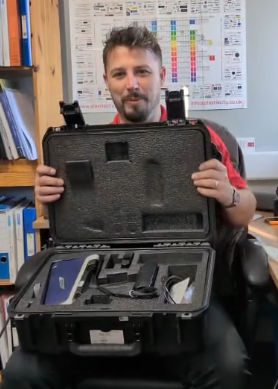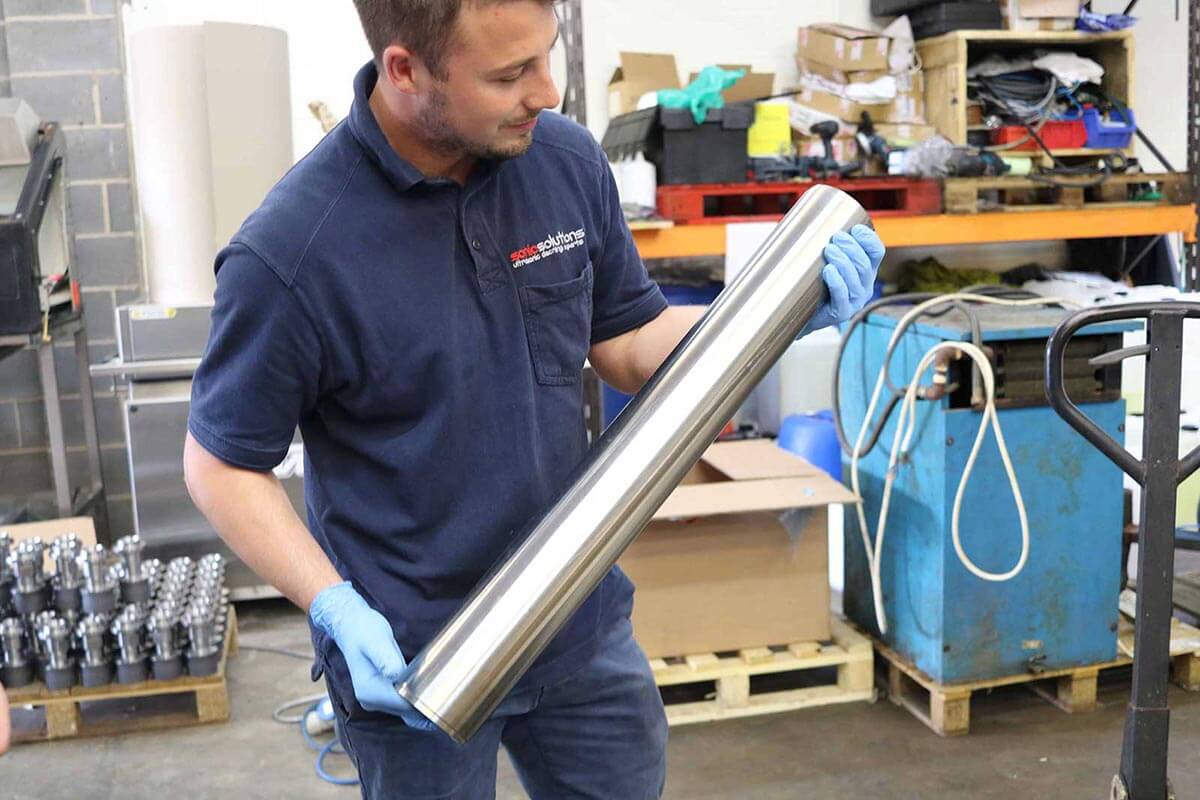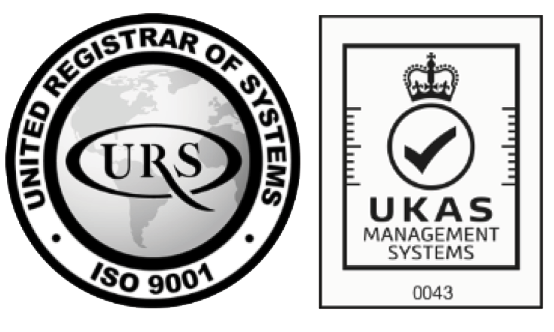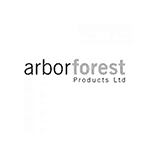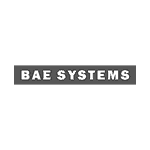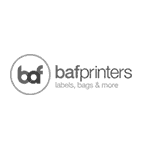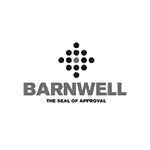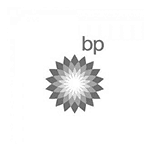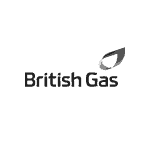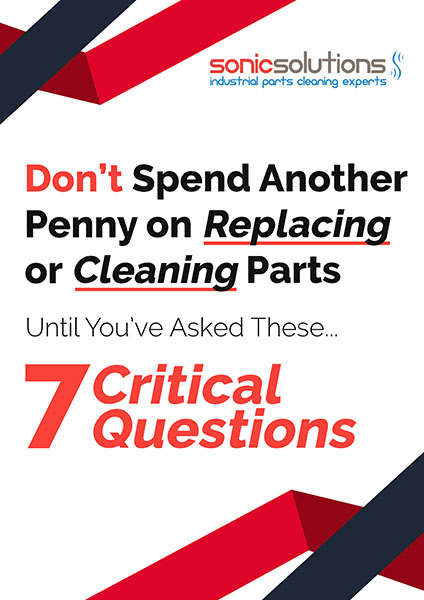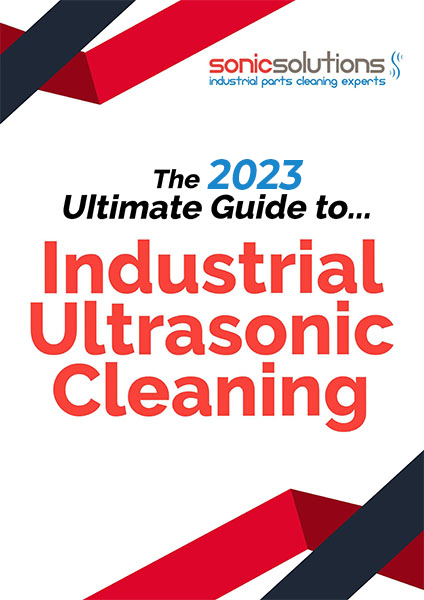Erema Maintenance – 5 Tips to Keep Your Hot Melt Filter Disks in Better Shape & Lasting Longer
For friendly & knowledgable help contact us on:
01924 495 975 hello@sonicsolutionsltd.com Open Contact Form
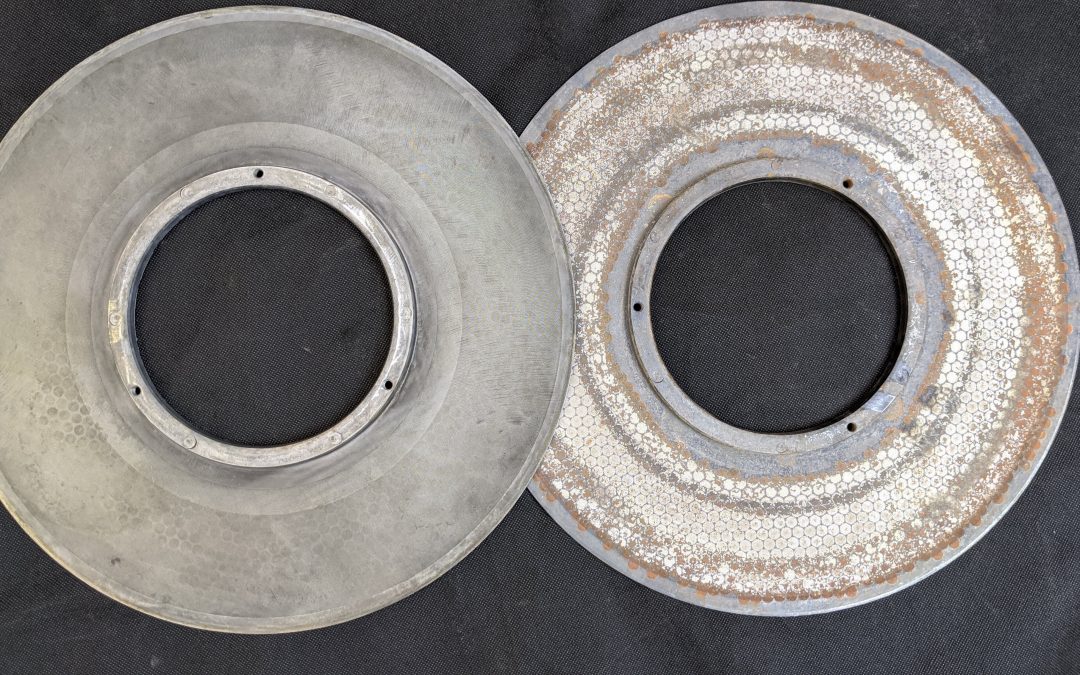
Erema are probably the most popular brand in the UK of machinery to make pellets from recycled plastics. Their system of continuous hot melt filtration allows for high productivity of an extremely pure product.
The laser cut discs through which recycled product is melted and passed through prior to pelletisation are key to the entire process. If they get blocked (or blinded) then pressure builds up and throughput drops. Worse, if the pressure causes the disc to burst then impurities enter the finished product. Proper maintenance of these discs is therefore critical. In addition to production issues from blinded or burst discs the cost of replacements is eye watering, so proper maintenance of Erema filter discs is a problem facing all managers of Erema extrusion lines. Yet the traditional cleaning method of burn-off of residual plastic only partially clears the filter. Here at Sonic Solutions we specialise in the cleaning of Erema laser filter screens. We have worked with some of the UK’s leading plastics recyclers over the last 3 years and developed a cleaning process that has seen replacement costs cut in half, throughput increased by over 10% and downtime significantly reduced for nearly all our customers. We are the first to acknowledge the contribution of our customers in the development of this process. We have also learnt the following top tips from our Erema using customers in the maintenance of these discs to reduce wear and tear and keep them running better and longer. We thought it might be helpful to managers of Erema hot melt extrusion lines to share these tips on how to maintain and clean their filter discs.
1: Scheduled Downtime
If you wait for your machine pressures to skyrocket between laser filter screen changes then you risk the screen bursting requiring costly replacement as well as impurities entering your finished product. Changing the screens at frequent and specific predetermined times brings many benefits, including a longer life for your screen and a reduction in unplanned downtime, one of the costliest, most stressful and embarrassing occurrences in any production line. The cost of more frequent cleaning is a fraction of the cost of unplanned and frequent downtime and resultant replacement costs.
2: Blade Change
Metal particulate can get trapped in the screen and dragged around and around the filter by a blade too blunt to cut through it, causing the deep scoring damage. Yet blades are inexpensive compared to the replacement cost of a screen. A regular customer of ours changes their blades every week in a scheduled downtime (they also change and clean their screens at this point). They report that some screens have lasted 8-9 cycles of burn off/ultrasonics as a consequence of this weekly changing of blades alone.
3: Screen Explosion
When re-using damaged or scored screen you should reduce the operating pressures and monitor carefully. You shouldn’t have to clean your filter core regularly since the material entering it should not be contaminated but on occasions when the screens burst, contaminated material will enter and block the core. It is then good practice to burn off and clean your core and pelletizing head as large pieces of wood or metal can enter the wedge in the holes, reducing throughput and cause another blockage. Usually a straightforward burn-off and jet wash will be adequate since there are no small holes to clean.
4: Burn off temperatures and times
For the best results when burning off your laser screens we have found that a temperature between 400-450 degrees centigrade works best. The oven should be slowly raised to this temperature and held there for around 3-4 hours. The oven should then be allowed to cool down gradually and not opened until the temperature falls below 250 Centigrade. This prevents flare-ups of any remaining plastics and rapid cooling of metal with the potential for warping and distortion. Larger items like the core, screens and blades with higher quantities of waste material to burn off may require longer to completely degrade the waste plastic. It is also important to allow sufficient space between items whilst in the oven so the heat can circulate properly and allow the molten plastic to melt away from the parts. Failure to do so can lead to an incomplete burn-off of the plastic contaminant on the items in the middle.
5: Ultrasonic cleaning and surface passivation
Traditional cleaning methodology for the filter discs tends to stop at a quick jet wash after burn off. Whilst this is fine for the heavy items like the core, blades, pelletising head and screws, the laser screens with their ultra fine mesh require a more complex multi-process clean. After burn-off and jet wash they still contain trapped, burnt carbonised plastic in the fine mesh and, if not dried properly, also rust heavily again blinding the micron sized holes. Ultrasonic cleaning in acid solution for around 3 hours cleans the screens to a near 100% cleanliness level. Furthermore, after the acid clean surface passivation in an rust inhibiting alkaline solution followed by a thorough drying ensures they remain clean and rust free until use. It is a classic case of the whole being greater than the sum of the parts. The whole process we employ to clean filter discs does take longer and cost more than the traditional method, but the benefits make the extra effort and cost well worth it. Laser filter screen lifetimes can be extended to double or triple compared to burning alone. Throughput can be increased by up to 20% because of reduced blinding. Extended times between blockages reduces downtime and bursts significantly. We know that the material type and quality going in has a lot to do with what goes on in the extruder, but a lot of that is out of your control. Maintenance of your hot melt filter line is something you can control. We hope the above tips are helpful.
If there’s anything you would like to ask us about the cleaning of your Erema discs and parts, we are more than happy to explore, advise and assist with whichever option works best for you and can offer hire or finance options. Contact our expert team today to discuss your requirements in more detail.

